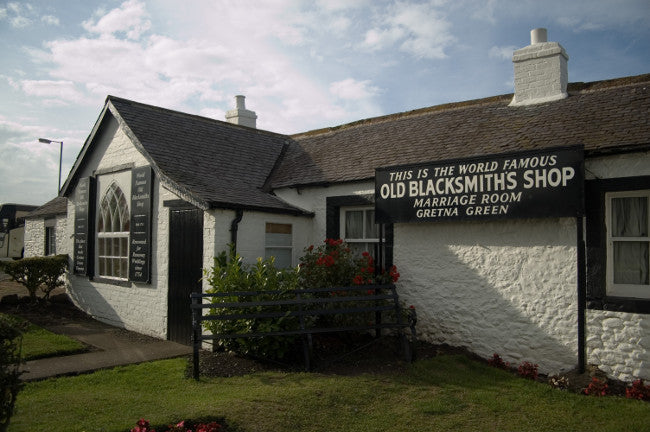Gretna Green is a small village in Scotland, just across the border from England.
Were you to drive through it, you’d barely give it a second glance.
But Gretna Green can make a good claim to being the most romantic spot in the entire British Isles.
Because since the 1750s, young couples have travelled here to elope. Over the years they’ve come on foot, on horseback, in coaches and by train. All to marry their true love away from the disapproving eyes of their families.
In 1754, the English government passed a law banning couples under the age of 21 from marrying without express parental consent.
There were serious penalties to breaking it.

(Image: Wikimedia Commons)
Any clergyman who married an underage couple could expect to be sent to an Australian penal colony.
And the Australia of the 1750s was not the Australia of today. Transportation was a seriously unpleasant prospect for anyone not disposed to scorching heat and backbreaking labour.
But Scotland had a long tradition of permissiveness when it came to marriage. Not only was the legal age 16, the law also allowed for irregular marriages.
This meant that as long as you spoke your vows in front of two witnesses - you were married. It really was this simple. Any member of the public could oversee a ceremony. It took just a few seconds. You would be asked if you were of age and free to marry.
As soon as the law came into effect in England, young couples began crossing the border in search of a quick wedding.
Gretna Green was one of several villages on the border and at first the flow of young people was evenly spread. Lamberton. Paxton Toll. Coldstream Bridge.
What made Gretna Green the place for these kinds of wedding was the opening of a major coach line between London to Edinburgh. When couples alighted, one of the first buildings they would have seen was the old blacksmith’s shop. They’d head to the heavy wooden door, knock and be admitted by one of the blacksmiths.
Over the centuries thousands of couples have tied the knot at the anvil, overseen by the blacksmiths. For a small fee they’d conduct the ceremony and provide a certificate. They came to be known as “anvil priests”.
In fact, a “Gretna Green marriage” became the de facto phrase for a wedding held in a different country to get around local law. Over time the government made it harder for English couples to marry in Scotland. But Gretna Green remained a popular destination for the romantically inclined. You can still get married at that same anvil today, where generations of English runaways have spoken their vows.
I have a fascinating pair of artefacts connected with Gretna Green.
One is a blank marriage certificate signed by “anvil priest” Peter Dickson. The other is a postcard of the famous Gretna Green blacksmiths signed by fellow “priest” Richard Rennison.
Discover more about these wonderfully unusual and romantic pieces of British history here.
Paul Fraser.






